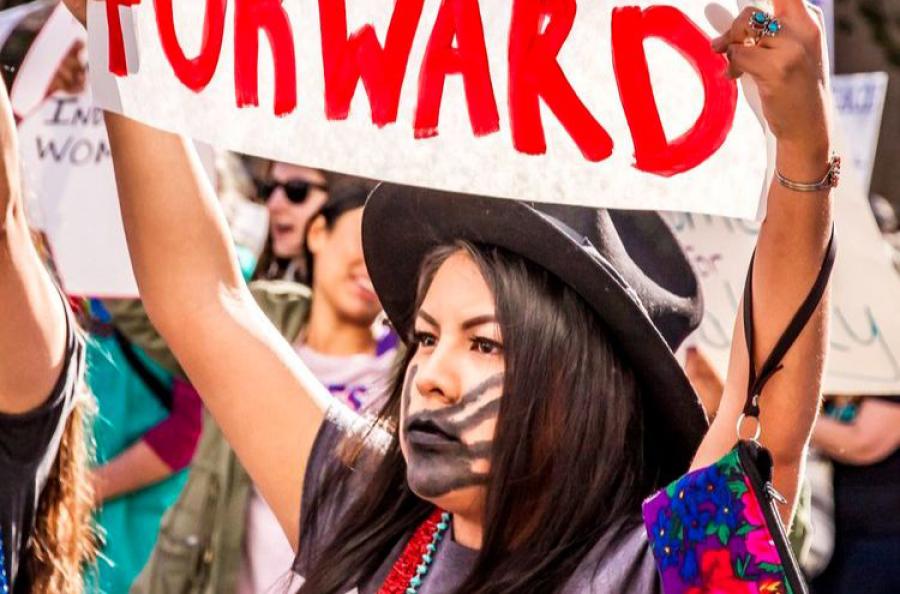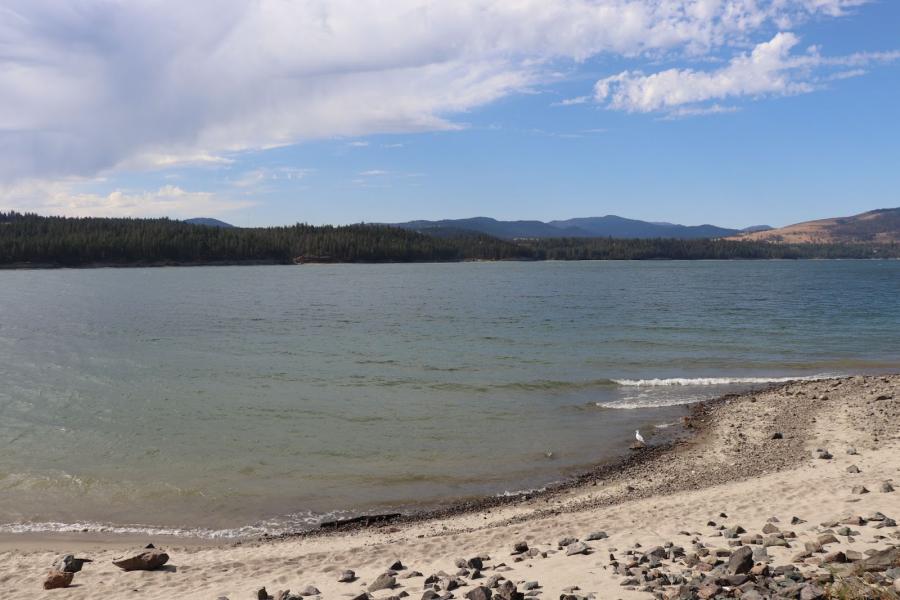The raspy sound of grinding mesquite beans fills the humid summertime air. Monsoon rains have returned to the Tucson basin to quench the desert's thirst, sprout wildflowers, and help to produce a healthy crop of kui (O'odham for mesquite beans). As I sit in front of the grinding stone, the edible seed-pods became a fine golden powder, filling the air with a sweet, wholesome earthiness not unlike the smell of the desert after a monsoon.
These magic beans are treasured for their nutritional properties (30-40 percent insoluble fiber and 5-10 percent soluble fiber), and have been used to treat problems of the throat, stomach, and intestines for centuries. Mesquite is even more remarkable for its ability to combat diabetes -- an epidemic that is paralyzing and killing Native communities throughout the Southwest.
There's no word for diabetes in the Tohono O'odham language, but over the past 50 years it has become so widespread that over 50 percent of Arizona's indigenous population suffers from its devastating effects. In Mexico, 3.8 million indigenous people are living with the disease. It can be directly linked to the drastic shift from traditional foods like corn, beans, and squash to a Western diet high in sugar and fat. Diabetes has severely impacted O'odham, Yoeme (Yaqui), Seri, and other Native American groups throughout the Southwest. The good news is that the same plants, cacti, and seeds that have sustained desert dwellers for centuries hold the very secrets for survival.
Groups like Native Seeds/SEARCH (NS/S), Tohono O'odham Community Action (TOCA), and the Arizona-Sonora Desert Museum are working to help reintroduce traditional foods to Native communities. Desert plants as common as prickly pear cactus, mesquite, and creosote have been pharmacologically proven to be helpful in the treatment and prevention of diabetes. Programs such as NS/S's "Desert Foods for Diabetes" are focused on promoting such foods, which slow down the digestion and absorption of sugar while reducing blood cholesterol levels.
Felipe Molina is Coordinator of the Desert Foods for Diabetes program. Over the past nine years he has worked tirelessly to educate indigenous communities about the importance of traditional foods. Traveling around the Southwest, and even as far away as Picuris Pueblo in northern New Mexico, Felipe brings a message of hope for communities troubled with diabetes. "The Desert Foods for Diabetes Project makes people realize that there are foods out there that can help prevent and control diabetes," he says. "What we're doing now is going into the schools to help the young kids learn about traditional foods and how to help themselves. The other day I went to New Pascua (Yoeme community near Tucson) and I saw very heavy kids -- something I've never seen before. It's our diet! We're very into soda pop and french fries."
One of Felipe's upcoming projects includes working with students from Lawrence School -- an educational center on the Yoeme reservation -- to learn more about desert foods and traditional lifestyles. "Grandmother's Day" will bring together grandparents and grandchildren to eat healthy foods together. Felipe will help them make chia (a thick, nutritious drink made from seeds) and mesquite muffins. "Sometimes the tepary beans are not too popular with kids," he jokes.
When asked what needs to happen in order for indigenous communities to become healthy, Felipe points north to the Akimel O'Odham reservation. "The Gila River community drew a strict resolution years ago to encourage O'odham people to eat more traditional foods," he said. "The other tribes could do the same thing. Diabetes is really getting out of hand."
And he should know. Felipe has seen many members of his own Yoeme community fall victim to the disease. According to the Tucson Indian Health Center, 65 percent of Arizona's Yoeme currently have diabetes. Hardest hit are women, including Felipe's own wife, Herminia Valenzuela. Many years ago when Herminia was diagnosed with diabetes she made the switch to traditional foods. Her blood sugar dropped almost immediately and her diabetes was kept in check. Her doctor was so amazed that he quickly became an advocate of desert foods. So much so that he buys tepary beans for his patients, and retells Herminia's story to every new patient diagnosed with diabetes.
"When I'm cooking with beans, chiles, and ingredients that have been cultivated here for nearly 2,000 years, I really feel a sense of [connection] to where I am and the people who have lived here before me," says Janos Wilder, executive chef and owner of Janos', who has been using desert foods in his dishes since opening the restaurant in 1983. "For my customers I think it gives them a chance to really connect to where we are in a very primary way. When you eat foods from the desert soil that have been grown in that soil for 2,000 years, how can you connect any better than that? It provides a unique culinary experience and a [feeling of connection] that you don't get through the world of corporate agriculture." By gathering chia seeds, grinding mesquite beans, or cooking up prickly pear pads, you not only take a step toward better health, you also take part in a tradition that has taken place in the Sonoran Desert for centuries.
Article copyright Cultural Survival, Inc.



